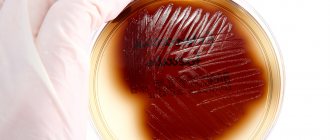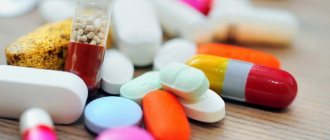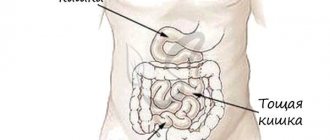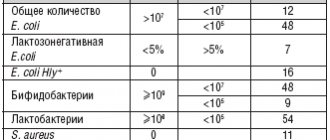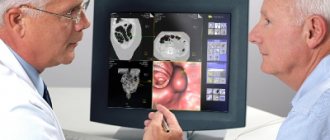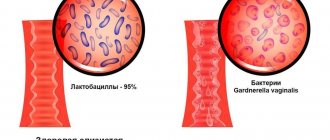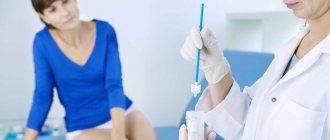Antibiotics are the mainstay of treatment for many infectious and inflammatory diseases. In most cases, these drugs suppress pathogenic flora, ensure rapid recovery and prevent infection.
However, such strong drugs have side effects, and in many cases, antibacterial therapy disrupts the balance of intestinal microflora: there are fewer beneficial bifidobacteria and lactobacilli that inhibit the growth of opportunistic flora.
As a result, antibiotic-associated diarrhea and dysbacteriosis may develop. Probiotics contribute to the restoration of intestinal microflora after antibiotics in adults.
A little about intestinal microflora
Linex - a preparation for microflora
Before moving on to drugs that will help restore the intestinal microflora, you need to learn a little more about its features in order to understand how important the prescription is. The intestinal microflora begins to develop from birth, but due to the characteristics of the body, it is fully formed only by the age of 13. The microflora contains about 500 different bacteria, 99 percent of which are beneficial, and only 1 percent are harmful. Beneficial bacteria help digest food entering the body and absorb vitamins and minerals.
As a rule, beneficial bacteria include bifidobacteria, lactobacilli, bacteroides, enterococci, and E. coli. As for harmful bacteria, which can be activated at any time and disrupt the general flora, include staphylococci, Pseudomonas aeruginosa, etc. The intestinal microflora is of great importance for the whole organism as a whole:
- If the state of the microflora is good, then the person’s immunity is at the proper level, because immunoglobulin A is produced
- Ensures normal digestion, as a result of which nutrients, essential vitamins and minerals are absorbed
- They neutralize the effect of toxins from harmful bacteria, which is why a person does not feel symptoms of intoxication even if there are more pathogenic bacteria
- Improves the overall condition of the skin, because if there are more pathogenic bacteria or there are simply problems with the intestines, then the condition of the skin worsens, acne appears, which indicates existing problems in the intestines
- Protects the body from premature aging. It was said above that beneficial bacteria neutralize the effects of toxins released by pathogenic bacteria. And if there are fewer beneficial bacteria, the body is poisoned by them, and therefore the aging process becomes faster
That is why close attention should be paid to your health and intestinal microflora, since the general well-being of the body and the person himself depends on its condition.
What is the difference between a probiotic and a prebiotic?
You already know what a probiotic is, but you might be wondering how it relates to prebiotics, as well as synbiotics, since these words are often thrown around.
In order for probiotics to multiply in our body and have a positive effect, they need proper nutrition. Prebiotics are non-digestible food ingredients that are not affected by digestive enzymes in the upper gastrointestinal tract, so they can reach the large intestine intact and stimulate the growth of beneficial bacteria there. Their representatives are oligosaccharides (consisting of 2-9 simple sugar molecules) found in onions, artichokes, oatmeal, wheat, breast milk and ripe cheeses. The most common are beta-glucans, celluloses, fructo-oligosaccharides (FOS), inulin and pectin, as well as lactulose.
Microflora disturbance
Microflora in the intestines can be disrupted for various reasons
There are many reasons why the microflora in the intestines can be disrupted. And depending on what became the provoking factors, the treatment will depend, during which attention is paid not only to the restoration of the flora itself, but also to the elimination of negative factors. The main causes of microflora disturbance include:
- Taking antibiotics, which in 90 percent of cases causes dysbiosis
- Poor nutrition, as a result of which the body does not receive enough fiber and other beneficial substances necessary for normal intestinal function
- Frequent bowel cleansing. Many people periodically, once or twice a week, “cleanse” by taking special medications to soften the stool. But in this case, not only feces are removed from the intestines, but also beneficial bacteria, which are so necessary for normal intestinal function.
- Frequent use of antibacterial agents, which can kill beneficial bacteria Weak immunity, due to which infections and other bacteria will penetrate more into the body, since it is not able to resist them
- Stress, which is the cause of many diseases
- Overfatigue, as a result of which the body adjusts to conserve energy
Treatment will depend on what caused the microflora disturbance, since it is not enough to simply take drugs to improve the microflora. It is also necessary to remove the provoking factor, because otherwise, even if you cure the intestines, but do not stop, for example, eating incorrectly, after a short period of time the problem will return again.
Exclude
While taking antibiotics and recovering from the course, you should exclude from your diet:
- grapefruit;
- alcohol;
- yeast and sugar (this means that you will have to give up flour products and sweets).
These products, firstly, interfere with the proper absorption of antibiotics, and can also cause nausea, abdominal pain and even heart rhythm disturbances. Antibiotic treatment can cause a yeast infection (candidiasis), and baked goods and sweets can make things worse.
Restoration of intestinal microflora
You can’t just start taking medications to normalize your intestinal microflora. In fact, this is a very long process, and it takes three to six months to restore the microflora. First of all, you need to start with cleansing the body. To do this, you need to start drinking Lactofiltrum, which can remove toxins and harmful bacteria from the intestines. At the same time, doctors recommend taking Enterol, which will help kill harmful bacteria that interfere with normal intestinal function. In addition, you need to eat right and consume a lot of fermented milk products, which contain lactobacilli.
After you have taken a course of Enterol and Lactofiltrum, you can move on to the process of colonizing the intestines with beneficial bacteria. There are many drugs, the main thing is to choose the one that is most suitable. It should be noted that this can only be done by a doctor who, based on the individual characteristics of the body, as well as previously taken medications, will prescribe the drug that will definitely help.
After completing the course
When antibiotic treatment is completed, it is necessary to help the body cope with its consequences. Here we also need probiotic products that improve digestion.
I would advise you to include several products from the list in your diet, you can do everything:
- sauerkraut;
- artichokes;
- spinach;
- whole grain cereals;
- yoghurts, but always natural, without adding toppings;
- kefir;
- heat-treated fruits and vegetables;
- Brussels sprouts;
- parsley;
- sea buckthorn
I will highlight sea buckthorn berries separately. When used correctly and in moderation, this product normalizes the digestive system, improves metabolism, helps in the treatment of ulcers and gastritis, and relieves heartburn. You can brew teas with berries, make compotes or jelly from sea buckthorn.
You can drink 1 tbsp of sea buckthorn oil at night. l. as a medicine. It will help heal and restore the intestines.
Seasonal product. How to properly prepare rose hips Read more
Normalization of intestinal macroflora in children
Particular attention should be paid to the restoration of the intestinal microflora in children, because it is in childhood that the formation of immunity occurs, as well as the general development of the body, where it is very important that cells and organs receive the necessary amount of nutrients and vitamins for normal growth. The most common drugs that are recommended to be given to children to restore intestinal microflora include:
- Linux. This drug can be given to children from birth and can be taken for up to one month. It is produced in a very convenient form, in the form of a powder that can be dissolved in water, milk, formula and given to the baby.
- Bifidumbacterin. This drug is relatively inexpensive, but its effect is excellent. It is recommended to give Bifidumbacterin even to children when they are transferred from one milk formula to another, etc. The drug is dissolved either in water or in milk formula and given to the child before meals. You need to drink it for about seven days to achieve the best effect.
- Normobakt. This drug has several forms of release, but for children it is better to purchase it either in the form of a sachet or simply in bags. It dissolves in a tablespoon of water and is given to the child with food. It tastes quite sweet, so it does not cause any disgust in the child. Depending on how disturbed the intestinal microflora is, the specialist will select the duration of the course. In most cases it lasts no more than 15 days
- Acipol. This drug can be given to children from three months. The only disadvantage of the drug is that it comes in the form of capsules, which a small child simply cannot swallow. Therefore, parents have to pour the contents of the capsule into a spoon, dilute with water and give
- Hilak forte. The action of this drug is aimed at cleansing the body of harmful bacteria, as well as stimulating the growth of beneficial ones. It comes in the form of drops, so the child needs to dilute it with water. It is forbidden to give Hilak forte with milk or any other dairy products.
Only a doctor can prescribe this or that drug to a child, because all cases are individual, and Linex will suit one, while another will have to take a long course of Normobact.
Is the temperature of where probiotics are stored important?
Air exposure is an important factor in the viability of probiotics, as is the temperature of the storage location.
Probiotic cells love warmth during development. The explanation is quite simple: the higher the temperature, the more the molecules move. We are talking about thermal excitation. A temperature of 40 degrees is ideal for the developing probiotic as it promotes the movement of molecules and therefore promotes life-sustaining biochemical reactions. But in the case of dehydrated probiotics, not the slightest biochemical reaction occurs! The second precaution to preserve the viability of probiotics is to store them at a low temperature. This is not necessarily true for all probiotics: yeast and bacterial spores (eg Bacillus subtitilis) are able to withstand very high temperatures due to their specific cellular composition and therefore do not require refrigeration. But in general, the higher the storage temperature, the higher the risk of the probiotic becoming unviable. This risk also increases with the duration of exposure to inadequate temperature. In other words, if you left your probiotics at room temperature overnight because you forgot to put them back in the refrigerator, you have no reason to worry. This time interval is not sufficient for the accumulation of the degree of degradation necessary for the final inviability of the probiotics.
Likewise, sending a jar of probiotics through the mail does not negatively affect their viability. The only important thing is that the probiotics are stored at the seller in a dry and refrigerated place. Be careful to always put the jar of probiotics back in the refrigerator after each use: these probiotics may have been weakened during transportation (depending on the time of year). Negative temperatures preserve probiotics much better than positive temperatures from +15 degrees.
Dysbacteriosis of the oral cavity
Medicines come in different forms of release
Digestion begins in the mouth. This part of the gastrointestinal tract system is distinguished by its own microflora, the disruption of which causes stomatitis, aphthae, ulcerations of the mucous membrane and skin in the corners of the mouth - the so-called jams.
The reasons for the development of flora imbalance are similar to other forms of dysbiosis. This includes a history of aggressive treatment, violation of hygiene rules, complex dental procedures, wearing braces and dentures.
Medicines for the stomach
Stomach pain is a side effect of many antibacterial drugs, as are attacks of nausea, heartburn, and chronic constipation. They arise due to a disorder of the sensitive ecosystem, activation of opportunistic microorganisms, and the development of putrefactive and fermentation processes. Taking eubiotics and enterosorbents will help cope with stomach pain. But if they are pronounced, then it is necessary to use the following drugs:
- antispasmodics No-shpa and its domestic analogue Drotaverine, which quickly eliminate painful spasms;
- antacids Rennie, Gastal, eliminating the most severe heartburn;
- proton pump inhibitors Omeprazole, Pantoprazole, which reduce the production of caustic gastric juice;
- saline solutions with glucose Regidron, Gidrovit, restoring water and electrolyte balance;
- Motilium, which copes with nausea.
The use of non-steroidal anti-inflammatory drugs with ibuprofen, diclofenac, nimesulide, ketorolac for pain is prohibited. Their pronounced side effect is increased production of hydrochloric acid.



